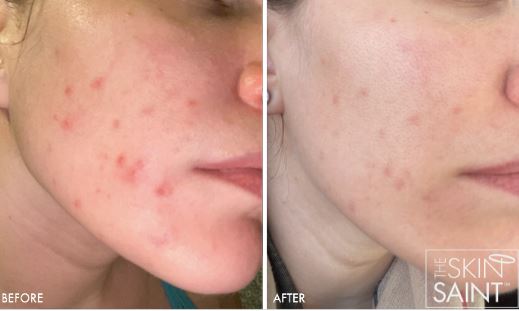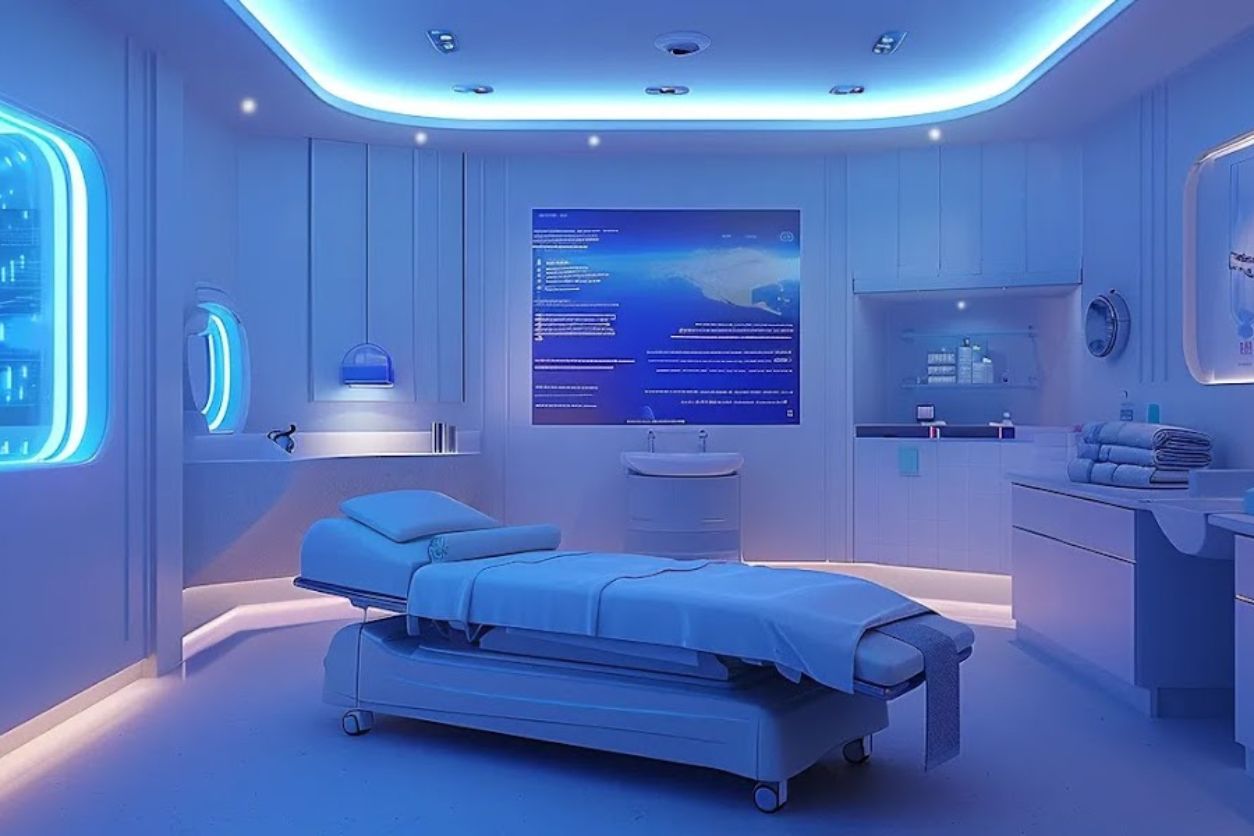Are you thinking about investing in laser skin resurfacing? Whether you’re eager to turn back the clock or correct blemishes that are present on your skin, this treatment can be the answer. At FACE Skincare~Medical~Wellness we provide a high-quality laser skin resurfacing treatment guaranteed to deliver the benefits that you want.
What is Laser Skin Resurfacing?
Laser skin resurfacing works by removing the topmost layer of skin to encourage healing and new skin cell growth to replace dull, damaged, and wrinkled skin. This remodeling encourages collagen growth for better support of the skin’s structure by replacing stretched, weakened collagen fibers. This helps keep new wrinkles from forming. The treatment isn’t painful, and we offer a topical anesthetic to maximize patient comfort.
Different Types of Laser Resurfacing
CO2 Laser Resurfacing
CO2 laser resurfacing is popular for treating deep wrinkles and scars. It works by removing thin layers of skin. This process causes minimal damage to nearby tissue. Recovery time can last up to two weeks. It’s suitable for patients needing more substantial skin improvement.
Erbium Laser Resurfacing
Erbium lasers treat fine lines and moderate wrinkles. These lasers cause less tissue damage compared to CO2, so recovery is faster—about one week. It’s often used on the face, neck, and hands, especially for those looking for quicker results.
Nd Laser
The Nd laser is ideal for darker skin tones. It reaches deeper into the skin while bypassing melanin. This helps reduce the risk of hyperpigmentation. It’s a good choice for patients with higher melanin levels who are concerned about skin discoloration.
Fractional Lasers
Fractional lasers work by targeting only a small fraction of the skin at a time. They treat various issues like acne scars and wrinkles. The benefit is quicker recovery, making them a popular option for patients wanting effective results with less downtime.
Pulse-Dye Laser
Pulse-dye lasers are used to treat issues related to blood vessels. This laser reduces redness and broken capillaries by using concentrated yellow light. It’s a good choice for patients dealing with facial redness or vascular skin concerns.
Ablative vs. Non-Ablative Lasers
Ablative Lasers
Ablative lasers remove the outer layer of the skin. This encourages new skin growth and stimulates collagen production. The results are more noticeable, but the recovery time is longer—often between one and two weeks. Ablative lasers are ideal for patients looking to treat deeper wrinkles, scars, and other major skin issues.
Non-Ablative Lasers
Non-ablative lasers, on the other hand, target the deeper layers of the skin without removing the outer surface. They are less aggressive, with shorter recovery times, usually just a few days. However, the results are subtler, and patients may need multiple sessions to achieve their desired outcome. These lasers are often used for patients looking to address fine lines and mild skin discoloration.
Which One to Choose?
Choosing between ablative and non-ablative lasers depends on the severity of the skin issue. If you’re dealing with significant wrinkles or scarring, ablative might be the better choice. For those with milder concerns or who need faster recovery, non-ablative lasers could be more suitable.
Patient Suitability and Risks
Who is a Good Candidate?
Laser resurfacing works best for patients with fair to medium skin tones. It’s ideal for those wanting to address wrinkles, sun damage, or acne scars. Patients with fine lines around the eyes, forehead, or mouth also benefit. However, those with mild skin laxity may require more intensive treatments for optimal results.
Who Should Avoid Laser Resurfacing?
Patients with very dark skin tones may be at higher risk for hyperpigmentation. Those with active acne, certain skin disorders, or a history of keloid scarring should avoid laser treatments. Pregnant women and individuals with compromised immune systems should also avoid this procedure.
Potential Risks
Common side effects include redness, swelling, and temporary discomfort. There is a small risk of infection if post-procedure care isn’t followed. In some cases, skin discoloration or scarring may occur, particularly in darker skin tones. Always consult with a board-certified dermatologist to minimize these risks.
Pre-Procedure and Post-Procedure Care
Before the Procedure
Patients should avoid sun exposure for several weeks before their laser treatment. Excess sun can increase the risk of complications. If you smoke, it’s essential to stop at least two weeks before and after the procedure, as smoking can slow down the healing process. Your doctor may also prescribe antiviral medication to prevent infections, especially if you’re prone to cold sores.
Post-Procedure Care
After the treatment, your skin may be red and swollen for a few days. You’ll need to clean the treated areas multiple times a day and apply ointments to prevent scabbing. Your physician may recommend using ice packs to reduce swelling and discomfort. It’s critical to avoid sun exposure during the healing process. Using a broad-spectrum sunscreen with SPF 30 or higher is necessary to protect the new skin.
Recovery Time
For ablative lasers, full recovery may take up to two weeks, while non-ablative laser treatments typically involve only a few days of downtime. Patients should avoid using makeup until the skin fully heals and refrain from using harsh skincare products.
Cost of Laser Resurfacing
Ablative Laser Resurfacing Costs
On average, the cost of ablative laser resurfacing ranges from $2,000 to $3,000 per session. The exact price depends on the area being treated, the provider’s experience, and the location of the clinic. Ablative treatments are more expensive due to the more intensive procedure and longer recovery period.
Non-Ablative Laser Resurfacing Costs
Non-ablative laser treatments are typically less expensive, averaging between $1,000 and $1,500 per session. These treatments usually require multiple sessions for the best results, which can increase the overall cost.
Insurance and Financing
Since laser resurfacing is considered a cosmetic procedure, it’s usually not covered by insurance. Some clinics offer financing options to help manage the cost. It’s important to consult with your provider about payment options before undergoing treatment.
Laser Resurfacing for Different Age Groups
20s and 30s
In younger patients, laser resurfacing is often used as a preventative treatment. Procedures like IPL or fractional lasers are popular for addressing early signs of sun damage, minor acne scars, and maintaining overall skin health. Many patients in their 20s and 30s opt for these treatments to boost collagen production and prevent future wrinkles.
40s and 50s
For patients in their 40s and 50s, laser resurfacing is commonly used to treat deeper wrinkles, sunspots, and reduced skin elasticity. Ablative or fractional lasers can significantly improve skin texture and reduce signs of aging. Patients in this age group often seek treatments that offer more noticeable results, as signs of aging become more prominent.
60s and Older
In older patients, laser resurfacing is often combined with other treatments like facelifts or dermal fillers to achieve the best results. While laser resurfacing can still improve skin texture, deeper wrinkles and sagging may require more aggressive treatments. Ablative lasers or CO2 lasers are frequently used to target these concerns.








